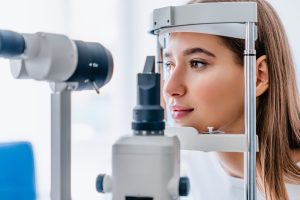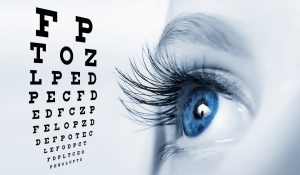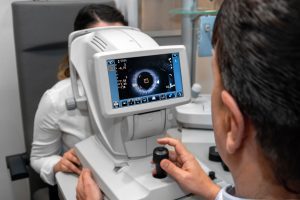Can an optometrist in Edmonton provide vision therapy?
Yes, an optometrist in Edmonton can provide vision therapy. Vision therapy is a form of treatment that aims to improve visual function and alleviate symptoms of certain visual disorders. It can include a variety of techniques such as eye exercises, visual perceptual training, and the use of special lenses and prisms. Vision therapy can be used to treat a range of conditions such as amblyopia (lazy eye), strabismus (crossed eyes), and binocular vision disorders. An optometrist can assess if vision therapy is appropriate for you and design a specific therapy program tailored to your needs.
Vision therapy is designed to improve and enhance visual skills
Vision therapy, also known as vision training or orthoptic therapy, is a specialized program of exercises and activities designed to improve and enhance visual skills and abilities. It is a non-surgical, customized treatment approach conducted under the supervision of a qualified optometrist or ophthalmologist.
Vision therapy is primarily aimed at addressing vision problems that cannot be adequately corrected with glasses, contact lenses, or surgery. It targets specific visual deficiencies and aims to improve eye coordination, eye movement control, focusing abilities, visual processing skills, and visual perception.
The therapy sessions typically involve a series of visual exercises and activities that are tailored to meet the individual needs of the patient. These exercises may include:
- Eye movement exercises: Activities that involve tracking and following objects with the eyes to improve eye movement control, smoothness, and accuracy.
- Focusing exercises: Activities that help improve the eyes’ ability to focus on near and far objects, switch focus efficiently, and maintain clear vision.
- Binocular vision exercises: Tasks that promote the coordination and alignment of the two eyes, improving depth perception and 3D vision.
- Visual perception activities: Exercises that enhance visual processing skills, such as visual memory, visual discrimination, and visual spatial awareness.
Hand-eye coordination exercises: Activities that integrate visual skills with manual dexterity and eye-hand coordination.
The duration and frequency of vision therapy sessions depend on the individual’s specific visual needs and progress. Typically, therapy may involve regular sessions over a period of several weeks or months. In addition to in-office sessions, patients may be assigned home-based exercises to reinforce the progress made during therapy.
Vision therapy can be beneficial for various eye health conditions and visual dysfunctions, including:
- Strabismus (crossed or misaligned eyes)
- Amblyopia (lazy eye)
- Accommodative disorders (problems with focusing)
- Convergence insufficiency (difficulty maintaining eye alignment for near tasks)
- Oculomotor dysfunction (eye movement problems)
- Visual processing disorders
It’s important to note that vision therapy should always be conducted under the guidance and supervision of a trained eye care professional. They will assess the individual’s visual needs, provide a personalized treatment plan, and monitor progress throughout the therapy process.

Related FAQs
Wearing glasses or contacts can indeed affect dry eye symptoms, but the impact varies. Glasses can help shield the eyes from environmental factors that exacerbate dry eye, such as wind or air conditioning. On the other hand, contact lenses can sometimes worsen dry eye symptoms by absorbing tear moisture or by causing irritation. Certain types of contact lenses are designed to be more breathable and retain moisture better, which may be suitable for people with dry eyes. It’s crucial to discuss with an eye care professional to find the most appropriate type of contact lens or glasses. Proper care and hygiene when using contacts, along with regular breaks from screen use, can help minimize dry eye symptoms.
Dry eye syndrome can be both a temporary condition and a chronic disease, depending on its cause and severity. Environmental factors or certain life situations, such as screen use or air travel can cause temporary dry eye. Chronic dry eye, on the other hand, may result from systemic diseases, medication side effects, or age-related changes in tear production. Management and treatment can alleviate symptoms, but chronic dry eye often requires ongoing therapy. It’s important to consult with an eye care professional for an accurate diagnosis and treatment plan. Understanding the underlying cause is key to determining whether dry eye syndrome will be a temporary issue or a chronic condition.
Yes, some specific exercises and therapies can help relieve dry eye symptoms. Blinking exercises, for example, can help improve meibomian gland function and tear film stability. Warm compresses applied to the eyes can also stimulate tear production and release oils from the glands in the eyelids. Gentle eyelid massages can help spread the oils evenly across the eye surface, reducing dryness. Using a humidifier to add moisture to the air and taking regular breaks to rest the eyes during screen time can also be beneficial. Newer technologies such as IPL (Intense Pulsed Light) and RF (Radio Frequency) are also becoming available. Consulting with an eye care professional for personalized advice on exercises and therapies is recommended.
Sleep plays a crucial role in managing dry eye syndrome. Poor sleep can lead to insufficient eye lubrication and worsening dry eye symptoms. During sleep, the eyes rejuvenate and produce the moisture needed for the next day. Good sleep hygiene practices can help ensure the eyes are well-rested and hydrated. It’s also important to avoid sleeping with any airflow directly hitting the face, as this can dry out the eyes. Establishing a regular, restful sleep schedule can significantly improve dry eye symptoms.
Indeed, some medications can exacerbate dry eye symptoms. Diuretics, antihistamines, antidepressants, and some blood pressure medications are known to reduce tear production or alter tear composition. It’s important to review any current medications with a healthcare provider to determine if they could be contributing to dry eye symptoms. Sometimes, alternative medications with fewer dry eye side effects can be prescribed. Always consult with a healthcare professional before making changes to medication regimens. Patients should also stay hydrated and consider using artificial tears if taking medications known to cause dryness.
Yes, it is quite common for dry eye symptoms to worsen in certain weather conditions. Dry, windy, or smoky environments can lead to increased tear evaporation, exacerbating symptoms. Conversely, high humidity can sometimes alleviate dry eye symptoms because the air is more saturated with moisture. Cold weather, especially during winter when indoor heaters are used, can also dry out the eyes. It’s advisable to use humidifiers in such conditions to maintain indoor humidity levels. Wearing wraparound glasses or protective eyewear outdoors can help shield eyes from harsh conditions.
West Edmonton Vision Clinic
Visit our vision clinic in central West Edmonton for comprehensive eye exams, contact lens fittings, glasses, and more. LL Eyecare Centre is dedicated to providing the highest quality optometric services and products to our patients. Our team of experienced optometrists is here to help you with all of your eye care needs. Schedule an appointment today!
Clinic Hours
Monday Closed
Tuesday 9:00-5:00
Wednesday 9:00-5:00
Thursday 9:00-5:00
Friday 9:00-5:00
Saturday 9:00-2:00
Closed Sunday / Holidays




